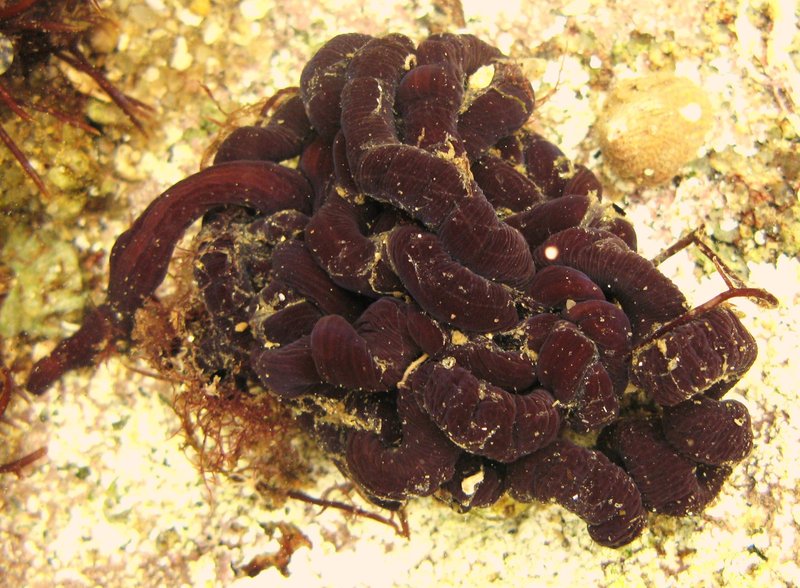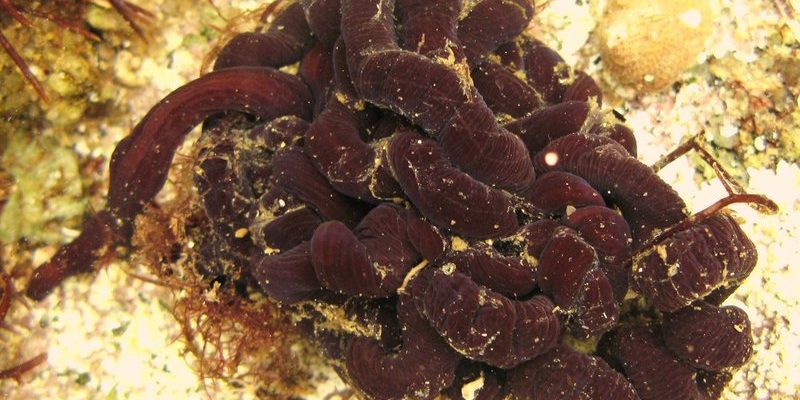
Bootlace worms belong to the group called polychaetes, which are segmented worms found mainly in marine environments. They have this fun nickname due to their length, resembling shoelaces shoehorned into the sea. But before we get into the nitty-gritty of what makes bootlace worms special today, let’s travel back in time to discover their ancient relatives and the incredible fossils that tell their story.
What Are Bootlace Worms?
Bootlace worms, scientifically known as *Lineus longissimus*, are among the longest species of worms in the world. They can stretch to impressive lengths, with some individuals reported to grow over 55 meters (about 180 feet) long! Imagine a creature slinking through the water, its body undulating gracefully as it navigates the seafloor. You might be wondering what makes them tick. Well, these worms are soft-bodied, segmented, and primarily live in shallow, marine environments. They’re most often found in the cold waters of the North Atlantic, which makes them a unique specimen to study.
Their elongated bodies are covered in a protective layer of mucus, allowing them to survive in harsh conditions. Unlike many creatures that depend on a hard shell for protection, bootlace worms rely on their slippery nature to escape predators. Honestly, it’s a bit of a survival trick that has worked for them throughout history. And while they may not look like much, their role in marine ecosystems is significant. They help break down organic matter on the ocean floor, contributing to nutrient cycling.
Bootlace Worm Fossils: A Glimpse Into the Past
Fossils are like time capsules, offering a window into the world long gone. Bootlace worm fossils help researchers piece together the ancient environments these creatures thrived in. These fossils typically take the form of tiny, segmented impressions. Unlike the more robust, hard-bodied creatures, the soft body of bootlace worms doesn’t fossilize as easily. However, scientists have still discovered valuable traces of these worms in sedimentary rock.
One of the most fascinating aspects of bootlace worm fossils is their age. Some of these remains date back over 500 million years, showing that they’ve been around since the Cambrian explosion. That period was a remarkable time in Earth’s history when many animal groups first appeared. Picture an ocean swarming with life, a veritable explosion of colors and shapes, including ancient relatives of today’s bootlace worms. These fossils can reveal how environmental conditions have changed and how the organisms adapted over time.
Ancient Relatives: The Evolutionary Path
Bootlace worms didn’t just pop up out of nowhere; they have a long lineage of fascinating ancient relatives. Their ancestors were likely more robust and featured a different set of adaptations. One key group that shares a common ancestor with bootlace worms is the annelids, a class of segmented worms that includes earthworms as well. Annelids have been around for over 300 million years, showcasing a successful evolutionary design.
Throughout their history, some of these worm-like relatives evolved into more complex forms, leading to diverse lifestyles. Some became burrowers in sediments, while others adapted to a pelagic lifestyle, floating through the water column. Here’s the thing: these evolutionary changes highlight how life on Earth is always transforming in response to the environment. The bootlace worm’s ability to thrive in various conditions is a testament to this adaptability.
The Role of Bootlace Worms in Ecosystems
Even though bootlace worms might seem simple at first glance, their role in marine ecosystems is crucial. They’re detritivores, meaning they feed on dead organic matter. By doing so, they help recycle nutrients back into the ecosystem, enriching the seafloor. This process is essential for maintaining the health of coral reefs and other marine habitats.
Moreover, bootlace worms serve as prey for a variety of marine animals. Fish, crabs, and even seabirds depend on these worms as a food source. It’s a bit like being part of a delicate web of life, where each organism plays a part in a larger story. By keeping the ecosystem in balance, bootlace worms help support a diverse range of marine species. You might not notice them swimming by, but they’re playing a vital role beneath the waves.
How Fossils Help Us Understand Climate Change
Studying bootlace worm fossils allows scientists to glean insight into past climate changes. When researchers analyze sediment cores, they’re not just looking for the worms themselves but the context in which they existed. Changes in the presence of bootlace worms can indicate shifts in ocean temperatures, salinity, and even pollution levels over time.
For instance, a sudden increase or decrease in fossilized remains could suggest dramatic environmental changes. By examining this data, scientists can create a timeline of how climates have fluctuated, allowing us to draw parallels to current global warming issues. It’s a sobering reminder of the interconnectedness of all life and how past events shape our present and future.
Preserving Bootlace Worms and Their Fossils
As we continue to learn about bootlace worms and their evolutionary story, preservation becomes key. Many marine environments are now under threat from climate change and human activity. Preserving habitats is not just about keeping these magnificent creatures alive; it’s also about protecting our understanding of Earth’s history.
Marine conservation efforts aim to reduce pollution and habitat destruction, ensuring bootlace worms and their ancient relatives can continue to thrive. Additionally, fossil sites need protection from activities that could lead to their destruction. Imagine losing a piece of history simply because it wasn’t safeguarded. Thankfully, many organizations are working to raise awareness and ensure that future generations can learn from these incredible organisms.
Bootlace worms are more than just long, squishy creatures of the sea; they represent a rich tapestry of life that dates back hundreds of millions of years. From their unique adaptations and important ecological roles to their fascinating fossil records, these worms offer a glimpse into the past that helps us understand the present. The story of bootlace worms is a reminder of nature’s resilience and ability to adapt, and studying them can help us tackle modern challenges, like climate change.
So, the next time you hear about bootlace worms, remember that they’re not just oddities of the ocean—they’re key players in a grand, ongoing saga of life on Earth. Every fossil tells a story, and every living worm contributes to the delicate balance of life beneath the waves. Let’s cherish and protect these ancient relatives as we marvel at the wonders they continue to reveal.

